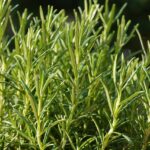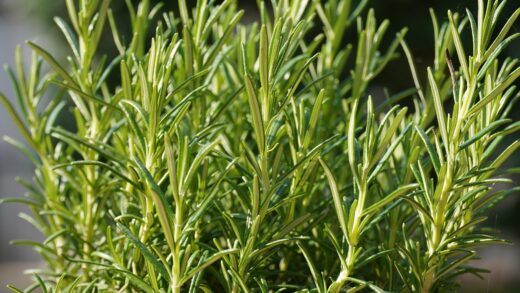The overwintering of the bachelor palm

Successfully overwintering the Zamioculcas zamiifolia is less about intensive care and more about understanding and respecting its natural period of dormancy. As the days shorten and temperatures drop in autumn, the plant’s metabolic processes naturally slow down. This is not a sign of distress but a normal part of its annual growth cycle. During this time, the plant’s need for water and nutrients decreases dramatically. The single most important adjustment for winter care is to significantly reduce the frequency of watering. Overwatering during the winter, when the plant is not actively using water, is the fastest way to cause root rot, from which it may not recover. It is crucial to allow the soil to dry out completely and stay dry for an extended period before even considering watering again.
The plant’s growth will likely come to a complete standstill during the winter months. You should not expect to see new shoots emerging, and this lack of growth is perfectly normal. Consequently, all fertilization must be stopped. Providing fertilizer to a dormant plant is not only useless, as the plant cannot absorb the nutrients, but it is also harmful. The unused fertilizer salts will accumulate in the soil, creating a toxic environment that can burn and damage the root system. Fertilization should only resume in the spring when you observe the first signs of new growth.
Light conditions also change in the winter, with the sun being lower in the sky and the daylight hours being shorter. While the ZZ plant can tolerate low light, it will appreciate being in the brightest possible spot during the winter. If you have moved it away from a south-facing window during the summer to protect it from intense sun, the winter is the perfect time to move it back closer. The weaker winter sun is unlikely to scorch its leaves and providing it with as much light as possible will help it maintain its energy reserves until spring returns.
Protecting the Zamioculcas zamiifolia from cold is another key aspect of its winter care. It is a tropical plant and is not frost-tolerant. It should be kept in a location where temperatures remain consistently above 10°C (50°F). It is vital to keep it away from cold drafts, which can come from leaky windows, doors that are frequently opened, or even heating and cooling vents that blow cold air. Sudden drops in temperature can shock the plant, leading to yellowing leaves and general decline. A stable, moderately warm environment is essential for it to rest comfortably through the winter.
Adjusting watering for dormancy
As winter approaches, the most critical adjustment in the care of a Zamioculcas zamiifolia is a drastic reduction in watering. The plant enters a state of dormancy or semi-dormancy, where its growth all but ceases and its water requirements plummet. The combination of shorter daylight hours and cooler ambient temperatures means that the soil will take much longer to dry out. Continuing to water on a summer schedule is a guaranteed recipe for disaster, leading swiftly to root rot.
More articles on this topic
During the winter months, you must be exceptionally vigilant about checking the soil moisture before watering. It is not an exaggeration to say that the plant may only need to be watered once every six to eight weeks, or in some cases, even less frequently. The soil must be allowed to become completely bone dry throughout the entire pot. Use your finger or a wooden skewer to check the moisture level all the way to the bottom. Do not water if you detect any coolness or moisture whatsoever.
When you do determine that it is time to water, continue to use the thorough soaking method. Water the plant until it runs freely from the drainage holes, then allow it to drain completely. It is even more important in winter to ensure that the plant does not sit in a saucer of excess water, as the cold, stagnant water is particularly conducive to rot. Empty any collected water from the saucer immediately after draining is complete.
This significantly reduced watering schedule mimics the dry season that the plant would experience in its native habitat. It is a natural and necessary part of its life cycle. Many growers find it helpful to simply move the plant to a location where it is not in their direct line of sight to avoid the temptation of watering it out of habit. Remember that for a ZZ plant, especially in winter, neglect is often the best form of care, and it is far more likely to suffer from too much attention than too little.
Light and location in winter
While the Zamioculcas zamiifolia is known for its tolerance of low light, providing adequate light during the winter is important for its health. The intensity and duration of natural light are at their lowest during this season, so positioning your plant in the brightest available spot can help it to continue photosynthesizing, even at a reduced rate. This helps the plant maintain its energy stores, ensuring it remains healthy and is ready for a new flush of growth in the spring.
More articles on this topic
An ideal winter location is near a south-facing window (in the Northern Hemisphere). The winter sun is much less intense than the summer sun, so the risk of leaf scorch is minimal. Placing the plant directly in the window’s light can provide it with the maximum available brightness. If a south-facing window is not available, an east or west-facing window is the next best choice. Avoid placing it in a dark corner or a windowless room for the winter if possible.
If you live in a region with particularly dark winters, you might consider supplementing with artificial light. A simple LED grow light can provide the necessary light spectrum to keep your plant healthy. It does not need to be an intense setup; a standard full-spectrum bulb placed in a nearby lamp for several hours a day can make a significant difference in preventing the plant from becoming weak or etiolated (stretched and spindly) over the long winter months.
It is also a good practice to keep the leaves clean during the winter. A layer of dust on the leaves can significantly reduce the amount of light that reaches the leaf surface, which is especially detrimental when light is already scarce. Gently wipe the leaves with a soft, damp cloth every month or so. This simple act of housekeeping maximizes the plant’s light-absorbing capability and keeps it looking its glossy best through the darker months.
Temperature and draft protection
Maintaining an appropriate temperature is a crucial component of winter care for the tropical Zamioculcas zamiifolia. The plant is not cold-hardy and can sustain damage if exposed to temperatures that fall below 10°C (50°F). For this reason, it must be kept indoors throughout the winter in any climate that experiences frost or prolonged cold. It is perfectly happy in typical indoor temperatures ranging from 18°C to 24°C (65°F to 75°F), which aligns with most centrally heated homes.
One of the biggest hidden dangers during winter is cold drafts. Even in a warm room, a spot next to a poorly insulated window or a door that is frequently opened to the cold outside can create a microclimate that is too chilly for the plant. Constant exposure to cold air can stress the plant, causing leaves to yellow and drop. Before winter sets in, assess the plant’s location and move it if it is in a drafty area. Feel for air movement near windows and doors to identify potential problem spots.
Another source of thermal stress can be proximity to heat sources. While you need to protect the plant from cold, placing it right next to a radiator, fireplace, or heating vent can be equally damaging. The hot, dry air from these sources can desiccate the leaves and cause browning at the tips and edges. The ideal location is one that offers a stable, moderate temperature, away from both cold drafts and direct blasts of hot air.
If your ZZ plant is situated on a windowsill, be mindful that the glass can become very cold, especially overnight. The leaves that are touching or are very close to the cold pane can be damaged. It is a good practice to pull the plant back a few inches from the glass, especially during the coldest nights. A simple buffer of air space between the plant and the window can be enough to protect it from the cold radiating from the glass surface.


















